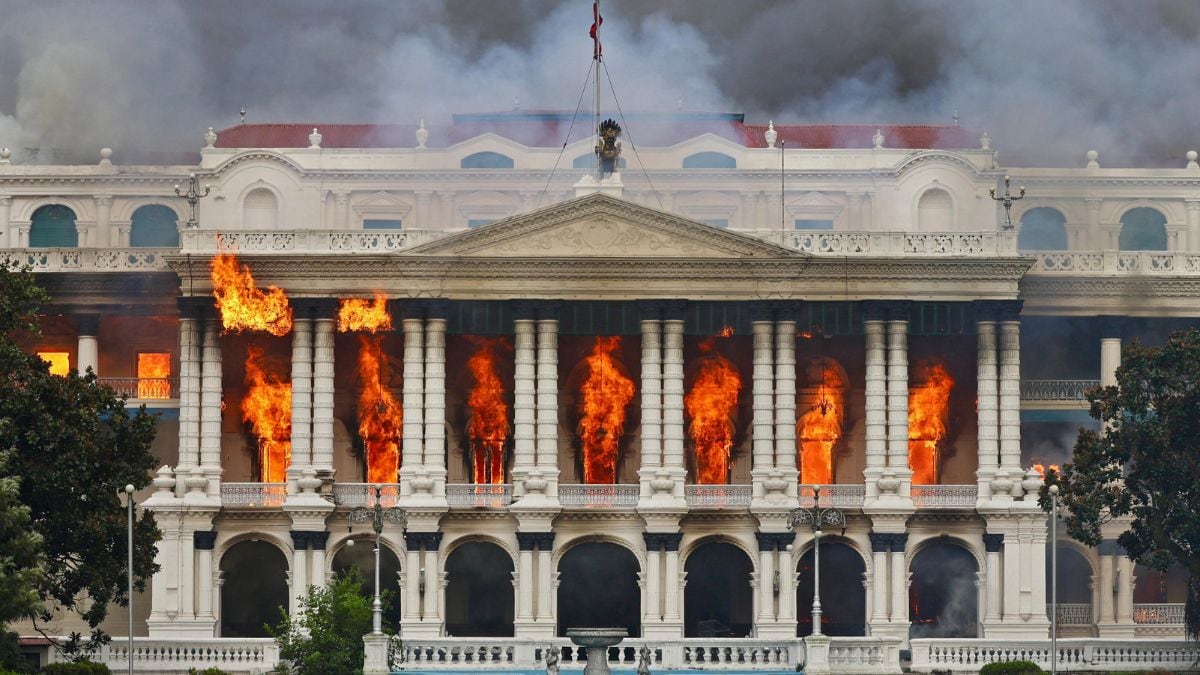In mounting trouble for Donald Trump, US Democrat Nancy Pelosi on Tuesday confirmed that House of Representatives will initiate formal
impeachment inquiry against the US president after reports surfaced of him betraying the oath of office by putting “pressure” on Ukrainian president Volodymyr Zelensky to investigate Joe Biden, a potential 2020 election opponent. The House Speaker also accused Trump of risking the nation’s security by seeking to enlist a foreign government for his own political gains. [caption id=“attachment_6731321” align=“alignleft” width=“380”] File photo of Speaker Nancy Pelosi. AP[/caption] “The actions of the Trump presidency revealed the dishonourable facts of the president’s betrayal of his oath of office, betrayal of our national security, and betrayal of the integrity of our elections,” Pelosi told a highly anticipated news conference in the US capital, adding, “he must be held accountable — no one is above the law.” The inquiry against Trump marks the
fourth time in American history when a president faced a viable threat of impeachment. Other than Trump, the list includes former US presidents Andrew Johnson, Richard Nixon and Bill Clinton. Pelosi, who well understands the challenges Democrats might face in proceeding with an impeachment inquiry, has long resisted calls from many progressive lawmakers to initiate the proceedings. But the revelations about Trump’s phone call with Zelensky on Biden appeared to have become the tipping point. Now here are a few things to know about the impeachment process and how it works:
What is Impeachment?
Many often confuse impeachment to be the removal of a president or other federal officials from office for committing an offence. But that’s not what it means. Impeachment is an indictment or a formal charge of a serious crime against the president, vice president or another federal officeholder. According to the US constitution, in a case of impeaching a sitting president, the House of Representatives can call for an inquiry if they believe that the president is guilty of “treason, bribery, or other high crimes and misdemeanours,” reported CTV news. The Senate conducts a trial after the officeholder is impeached to determine whether the accused is guilty of the charges. The accused can be removed from office only after a guilty verdict is reached.
Who can file impeachment charges?
The US constitution provides the House with the sole power to impeach a federal official or to introduce an impeachment resolution, which would further get reviewed by the House Judiciary Committee. The committee can conduct their own investigation and then bring articles of impeachment against the president, and present that evidence to the House. If the committee votes to approve articles of impeachment, the formal charges move to the full House for consideration. Finally, the House votes on each of the articles of impeachment separately. A majority vote is needed for the impeachment to pass. If all 435 House members vote, then 218 votes would be required for a majority. However, this does not mean that the president can be removed immediately. The case is then handed over to the Senate, where a trial is held. The chief justice of the Supreme Court would preside over the Senate trial. At least two-thirds of the Senate needs to vote to impeach in order for the motion to pass, USA Today reported.
Is the Senate obligated to hold a trial?
Quoting a Duke University law professor Still Walter Dellinger, The New York Times said it was still uncertain as to who wielded the authority, Senator Mitch McConnell or Chief Justice John G Roberts Jr, to convene the Senate for the purpose of considering House-passed articles of impeachment. It is important to be noted that the Republican majority in the Senate could vote to immediately dismiss the case without any consideration of the evidence if it wanted.
Can the Supreme Court overturn?
No. Trump has said on Twitter that he would ask the Supreme Court to intervene if Democrats tried to impeach him. But the founders explicitly rejected allowing an appeal of a Senate conviction to the federal judiciary.
Party breakdown in Congress?
The House has 235 Democrats, 199 Republicans, and one independent. As a result, the Democrats could impeach Trump with no Republican support. In 1998, when Republicans had a House majority, the chamber voted largely along party lines to impeach Bill Clinton, a Democrat. The Senate now has 53 Republicans, 45 Democrats and two independents who usually vote with the Democrats. Conviction and removal of a president would require 67 votes. So, for Trump to be removed from office via impeachment, at least 20 Republicans and all the Democrats and independents would have to vote against him.
Who becomes President if Trump is removed?
If the Senate convicts Trump, Vice President Mike Pence would become president for the remainder of Trump’s term, which concludes on 20 January, 2021. With inputs from agencies Editor’s note: The Donald Trump administration on 24 September released the telephonic conversation between US president and Ukrainian president Volodymyr Zelensky on 25 July, although not verbatim. This article is being republished in the view of that report.


)

)
)
)
)
)
)
)
)



